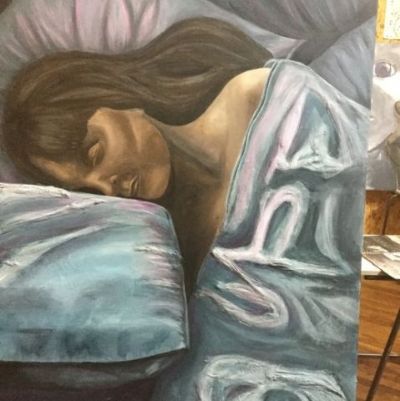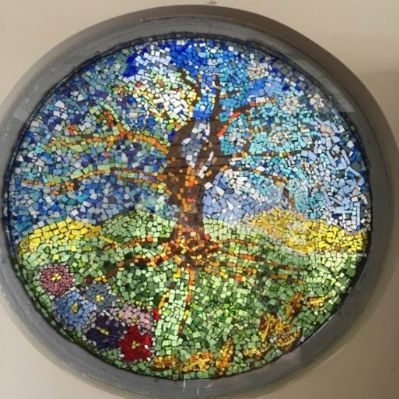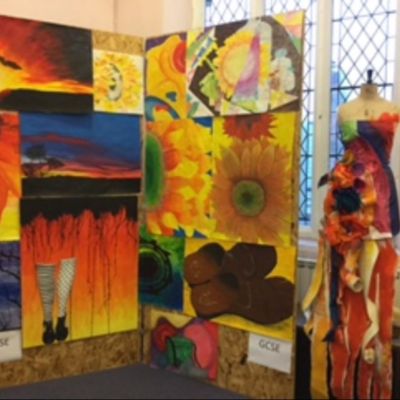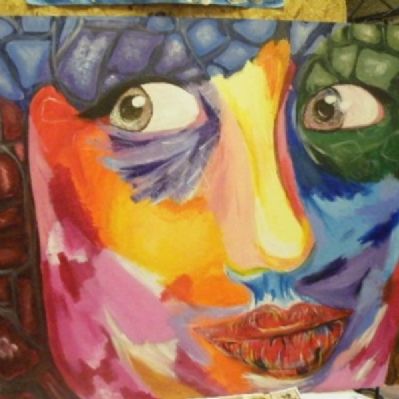
Art and Design
Art Core Belief
Art matters it changes lives; it documents and reflects experiences, and teaches us about the world around us. Art is an integral and unique part of a child’s core education, developing curiosity, creativity, critical thinking and problem solving skills through study, creation and reflection.
Here at Dyson Perrins, we believe that art is also integral to the development of healthy mental, emotional, and psychological growth of our students as well as completely embodying the school values of trust, challenge, resilience and belief. Art stimulates both sides of the brain and allows children to learn to use their senses. The art classroom provides a safe haven for children to express themselves at school in an open, stimulating and nurturing environment.
Art Curriculum Intent
The aim of the KS3 Art Curriculum at Dyson Perrins is to empower our learners to become confident and fluent artists who will foster a lifelong love of the subject.
We aim to engage students with the visual arts, technical and creative skills through themes that provide opportunities for students to develop their ideas, research and experimentation.
Students will become fluent and secure in knowledge and skills that allow for confident and independent decision making to purposefully realise their intentions.
The formal elements spiral through KS3 units of work acting as a spine supporting the cumulative acquisition of knowledge, understanding and skills. Units of work sequentially build in complexity which helps students to build a schema over time.
Students will explore ideas often through observational starting points. They will produce creative outcomes becoming proficient in 2d painting, drawing, print and 3d. Students will record their ideas in a variety of different ways; refining and developing their work using different materials and techniques. This creative process will culminate in students presenting their work through a final or series of pieces.
Using the language of art craft and design students will be able to discuss and analyse contemporary and historical sources, showing critical and contextual understanding of the art form
By the end of KS3 students will be confident learners secure in their knowledge, understanding and skills and they will be proficient in their understanding and use of the formal elements.
Art & Design KS3
|
|
Learning Cycle 1 |
Learning Cycle 2 |
Learning Cycle 3 |
|
Year 7 |
1 Drawing programme Right / left brain -2d A programme of 4 sessions where student learn a number of techniques which teach them how to focus and engage both sides of the brain and improve their observational recording 2.Symbolism – 2D/3D Students learn about the artist Gustav Klimt and his use of symbolism. Taking influence from Klimt students create their own symbolic shapes which are used to develop pattern and Christmas inspired outcomes Test: analysis symbolism, analysis, interpretation Formal elements: line, shape, pattern, colour |
Pop Art – 2D/3D Students learn about Pop Art. They focus on the artists Andy Warhol, Roy Lichtenstein, Michael Craig- Martin and Patrick Caulfield. They learn colour theory. Individual designs develop into relief art inspired by what is popular in our time
Test: analysis, colour theory
Formal elements: Line, shape, colour |
O’Keeffe / Poster art -2D Georgia O’Keeffe. Students learn about the artist. Building on their understanding of colour and O’Keeffe they paint observational flowers Poster design Students learn about effective poster design composition and produce colour outcomes incorporating their understanding of their artist.
Test: analysis, tone, composition
Formal elements: Tone, , space / composition
|
|
Year 8 |
Natural form – 2d Students learn a number of techniques, which teach them how to improve their observational recording. Revisit engaging the right brain Students use their learning to improve their observational recording skills. Test: AO1/3/4 analysis, line, form, tone Formal elements: Line, tone, form |
Aztec – 2D/3D Students learn about the Aztecs. The focus is colour and pattern. They design a range of outcomes based on their research; these designs develop into collagraph prints as well as making clay/ glass mosaic tiles, or soap carving. Test: AO1 analysis and pattern Formal elements: Tone, shape, form, pattern, colour |
Gaudi - 3d Students learn about the work of Anton Gaudi They learn how to develop and adapt their natural form drawings (LC1) into 3d designs. They build 3d forms in clay/other materials in the style of Gaudi Test: AO1/3/4 analysis, tone, form Formal elements: Line, texture, form |
|
Year 9 |
Cubism – 2D Students learn about Cubism and the artists Picasso and Braque. They use Cubism theory to develop their observational bottle drawings into abstract designs. Revisiting engaging right brain They learn about tonal value in pencil and acrylic paint completing final outcomes
Test: AO1/2/4 analysis interpretation, tone Formal elements: Line, tone, shape, form |
Dragons -Exploration of techniques and materials 2D 3D Students learn about Western and Chinese dragons. Using the dragon form, students learn a variety of different techniques which can include:
They choose from their learning to create an outcome, e.g. a board game using painted tonal techniques with modelled dragon counters. Test: AO2 techniques, Formal elements: Line, tone, texture, shape, form, space/composition, colour |
Mystical creatures / Hundertwasser – 2D Students respond to a brief, they make individual outcomes using learning in cycle 2 - mythical creatures. Final 4 lessons students build a research A2 sheet on the artist Hundertwasser. They learn the 4 steps of art critism in preparation for GCSE Art: Description - The facts. Analysis - The formal elements of art: colour, texture, tone, line, shape, form and composition, style and technique. Interpretation - What do you think is happening and why? What was the artist’s intention? Judgment - Do you like it or not why? Students learn how to be successful learners at GCSE Art.
Test: AO1/2 description, analysis, understanding, judgement Formal elements: Tone, space/composition, colour |
Art & Design KS4
Key Stage 4 course:
GCSE ART and DESIGN
https://www.aqa.org.uk/subjects/art-and-design/gcse/art-and-design-8201-8206
The AQA GCSE Art and Design specification allows students the freedom to develop individual work in ways that inspire and support particular strengths, whilst equipping them with the skills to continue the subject with confidence at AS, A-level and beyond.
The qualification can include all aspects of Art, craft and design, including Fine art, Graphic communication, Textile design, Three-dimensional design and Photography. The flexibility of its design means that the course can be tailored to students’ interests and strengths.
Students produce two units of work for their coursework, 60% of the final mark and a final exam unit, 40% of the final mark.
|
|
Learning Cycle 1 |
Learning Cycle 2 |
Learning Cycle 3 |
|
Year 10 |
Unit 1 Food |
Unit 1 Food |
Unit 2 All About Me / Portraiture |
|
Year 11 |
Unit 2 All About Me / Portraiture |
Exam preparation |
Exam preparation and exam |
Pedagogy commonly used in the art department:
Carol Dweck - ‘Growth mind set’ theory
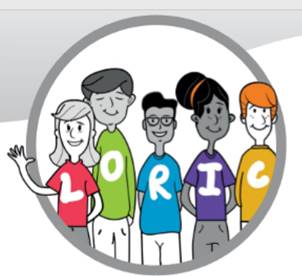
Dr Spencer Kagan – Cooperative Learning
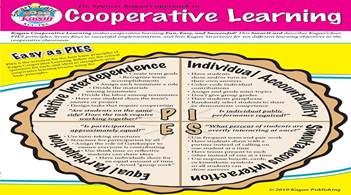
Julia Strong - Talk For Writing (T4W)
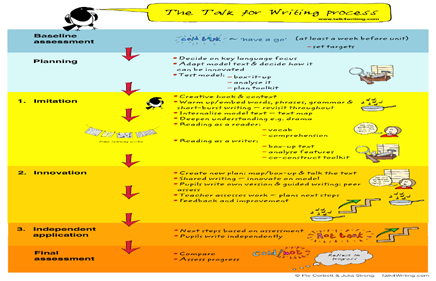
Dyson specific - Recall do now task and time of silent independent work:


10 mins



